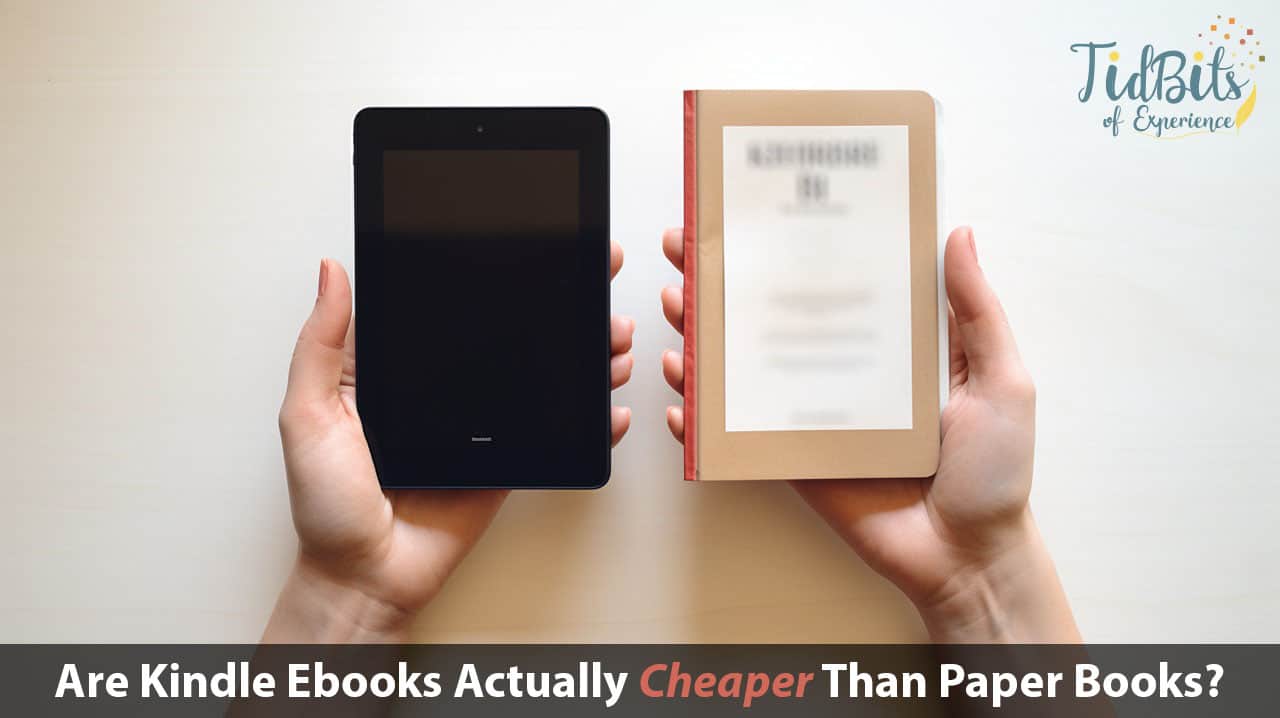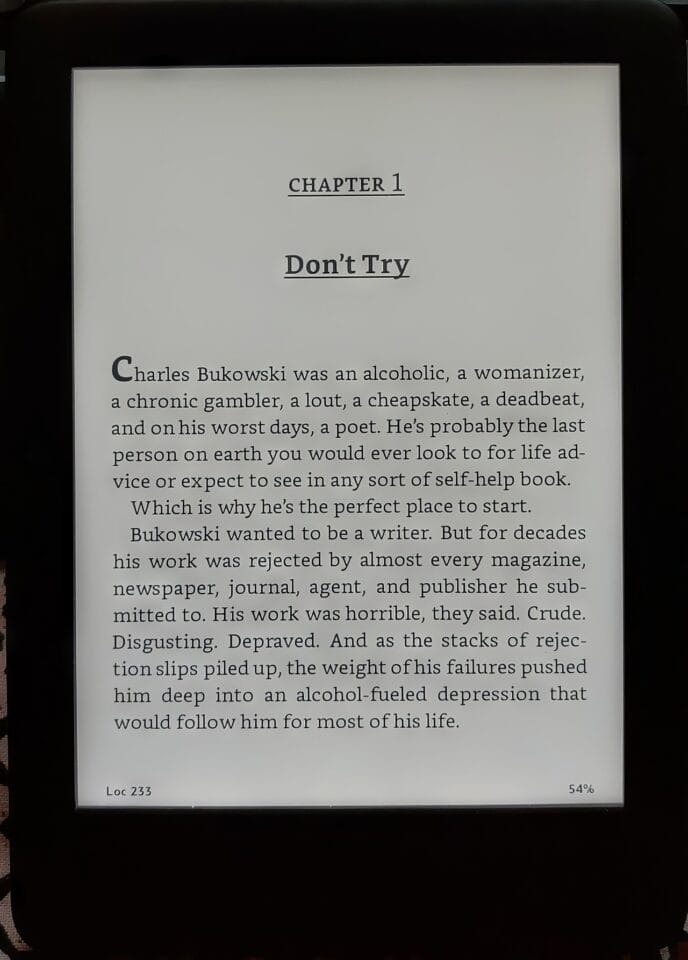As a mom, have you ever been on the fence about whether to buy Kindle eBooks or stick with good ol’ paper books? Just like you, I’ve found myself wondering if transitioning to digital reading could really save me money.
After combing through dozens of bestsellers’ prices and chitchatting with industry experts, this blog uncovers the true costs behind both formats. Ready for some page-turning revelations? Let’s dive in!
Key Takeaways
Kindle ebooks are generally cheaper than print books due to lower production costs and the availability of free or discounted options.
The price difference between ebooks and print books is not always significant, especially for paperback editions or classic titles.
Environmental factors, such as reduced deforestation and carbon emissions, make ebooks a more eco-friendly choice compared to print books.
Ebooks offer benefits like portability, convenience, and font customization options, while physical books provide a unique reading experience with the touch and feel of paper.
Table of Contents
Understanding E-Books and Print Books
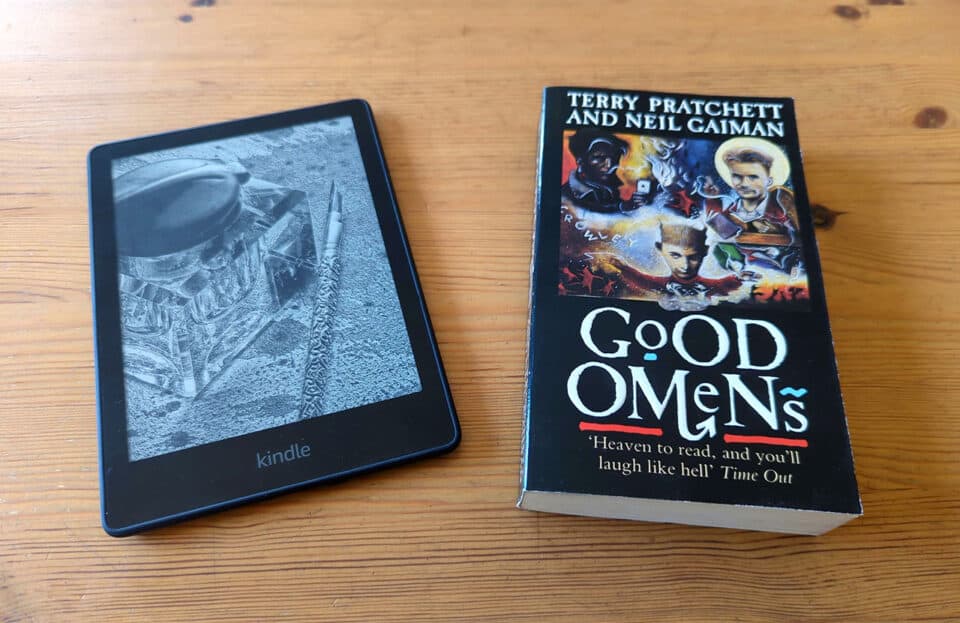
E-books are digital versions of books that can be read on electronic devices, while print books are physical copies made of paper and ink.
Overview of E-Books
Ladies, let’s chat about the magic of e-books. No more do we need to lug around heavy bags filled with multiple novels for our voracious reading appetites. E-books are digital versions of print books that you can read on devices like a Kindle or your smartphone.
They’re as light as a feather because they exist in the virtual world. The real kicker? You can store an entire library on these tiny gadgets! Can you imagine carrying thousands of books in your bag at once? With e-books, this is possible! As well as being lightweight and space-saving, e-books offer font flexibility – ideal for those days when our eyes need a bit of extra help (or when we’ve misplaced our glasses!).
Fun fact: despite their high-tech nature, e-books have been around longer than most people think and are now considered a firm fixture within the publishing industry.
Overview of Print Books
Let’s dive into the world of print books, shall we? As most book lovers know, print books come in two main types: hardcovers and paperbacks. The tactile experience of a print book is one reason many readers prefer them over e-books.
There’s just something comforting about feeling the rough texture of a page between your fingers or the satisfyingly solid weight of a hardcover in your hands after tucking the kiddos into bed at night.
According to our friendly neighborhood Association of American Publishers, sales for these tangible treasures were stable at around $3 billion for hardcovers and $2.5 billion for paperbacks in 2019 alone! Even during the peak pandemic home-schooling madness when digital was all the rage, consumers still craved that physical connection with their literature – pushing sales up by 8.2% in 2020.
After all, there’s no replacement for turning real pages while sipping that much-needed morning coffee away from buzzing tablets and phones.
The Cost Comparison: E-Books vs. Print Books

E-books generally have lower initial costs compared to print books, making them an attractive option for budget-conscious readers.
Initial Cost of E-Books
Diving right into the initial cost of e-books, you might be surprised to learn that they’re generally less expensive than their print counterparts. This appealing price difference is largely due to lower production expenses—no costs for paper, ink, or physical distribution.
Plus, many classics are available at bargain prices or even for free! However, just like with a physical book shopping spree, these costs can still add up if you’re not careful. The real budget saver comes when we consider things like subscription services like Kindle Unlimited and Amazon Prime’s Prime Reading – it’s like having an entire library in your bag without emptying your wallet.
And let’s not overlook borrowing eBooks from libraries using the Overdrive app – another potential money-saver! Nonetheless, keep in mind the upfront cost of an e-reader device itself can range anywhere from $160 (for a Kobo Nia) to $749 (for something high-end like the Remarkable ReMarkable 2).
A small investment initially, but imagine carrying thousands of books wherever you go—it’s positively liberating!
Cost of Print Books
Print books can sometimes be more expensive than their e-book counterparts. This is mainly due to the production costs associated with printing and distributing physical copies. Unlike e-books, which can be easily downloaded and stored on electronic devices, print books require materials like paper, ink, and packaging.
These overhead costs are factored into the price of print books, making them slightly pricier. However, it’s important to note that the price difference between e-books and print books isn’t always significant, especially when it comes to paperback editions or classic titles.
So while you may not save a ton of money by opting for an e-book over a print book, there is still some potential for savings in certain cases.
The Shrinking Price Difference
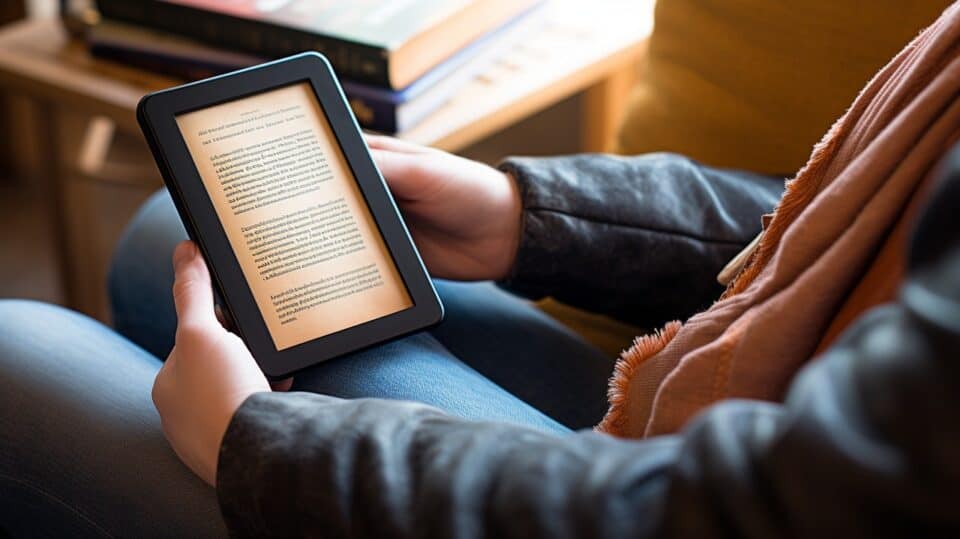
E-books can be cheaper than print books due to lower initial costs and the availability of free or discounted e-book options. The price variability of print books, however, means that there is not always a significant price difference between the two formats.
E-Books Can Be Cheaper
I love finding a good deal, and when it comes to books, e-books can often be cheaper than their print counterparts. With e-books, there are no printing or distribution costs involved, which means publishers can offer them at a lower price.
Plus, there are plenty of free e-books available too! In fact, Project Gutenberg and Google Books have a vast collection of classic books that won’t cost you a penny. So if you’re looking to save some money on your reading habit, consider going digital with e-books.
Price Variability of Print Books
So, let’s talk about the price variability of print books. As a mom who loves to read, you’ve probably noticed that the cost of print books can vary quite a bit. While some books may be priced at a bargain, others might cost you as much as a trip to your favorite coffee shop.
The truth is, the price of print books depends on various factors, like whether it’s a hardcover or paperback edition if it’s a new release or an older classic, and even the popularity of the author.
For example, Barack Obama’s memoir “A Promised Land” or John Grisham’s latest thriller “The Guardians” are likely to have higher price tags due to their popularity and demand. On the other hand, classics like Charles Dickens’s “Bleak House” may have more affordable options available.
However, it’s important to note that even though e-books are generally slightly cheaper than their print counterparts, this price difference isn’t always significant. In fact, the gap between e-book prices and paperbacks is narrowing as publishers continue adjusting their pricing models.
Other Considerations Impacting Cost
In addition to the initial cost comparison between e-books and print books, there are other factors that can impact the overall cost of reading.
Environmental Considerations
As a mom, I know how important it is to consider the environment when making purchasing decisions. When it comes to choosing between Kindle ebooks and paper books, there are some environmental factors to keep in mind.
E-books eliminate the need for physical storage space and production materials like paper and ink, which helps reduce deforestation and waste. They also eliminate the carbon emissions associated with shipping physical books.
So when you choose an e-book over a print book, you’re not only saving space in your home but also contributing to a greener planet.
It’s worth noting that e-readers and electronic devices used for reading e-books require regular recharging, which may seem like a drawback at first. However, studies have shown that even considering the energy used for charging e-readers, they still have a lower overall environmental impact compared to print books.
Plus, as technology improves, e-readers are becoming more energy-efficient.
The Ability to Share and Borrow Books
I love being able to share and borrow books with my friends and family, and it’s something that can be a bit more challenging with e-books. While there are ways to lend e-books or access them from libraries, it’s not always as convenient as simply handing over a physical book.
Plus, many popular e-books have copyright protection, making sharing even more difficult. So if you enjoy swapping books with your loved ones or taking advantage of your local library, keep in mind that this is easier to do with physical books than with e-books.
Benefits of Kindle Over Physical Books

Kindle allows you to hold thousands of books in one lightweight, rechargeable electronic device.
Holds More Books
As a mom, I know how challenging it can be to juggle multiple responsibilities while still finding time for leisurely activities like reading. That’s why an e-reader like the Kindle is a game-changer.
With its lightweight design and ample storage capacity, the Kindle holds more books than you could ever imagine carrying in your bag. You can have your entire library at your fingertips, with instant access to any book you want to read.
No need to worry about running out of things to read during long car rides or while waiting at soccer practice – the Kindle has got you covered! Plus, with the ability to adjust font sizes and styles, you can tailor your reading experience to suit your preferences and make it easier on tired eyes after a busy day.
Easy to Carry Around
As a busy mom, convenience is key when it comes to reading. That’s why I love e-books and my Kindle! With an e-reader like the Kindle, I can carry around thousands of books in one lightweight device.
No more lugging around bulky hardcovers or filling up my bag with multiple paperbacks. Whether I’m waiting at the doctor’s office or enjoying some downtime at a coffee shop, I always have access to my entire library right at my fingertips.
Not only is it easier on my back, but e-readers also come with nifty features like adjustable font size and style, so I can customize my reading experience to suit my preferences. Plus, they’re rechargeable, so no need to worry about running out of battery during a long book binge.
It’s simple and hassle-free – just grab your Kindle, and you’re good to go!
In addition to being convenient for moms on the move, e-books are generally cheaper than print books too. So not only do we get all these incredible benefits of portability and customization, but we can also save some money while expanding our literary horizons.
Benefits of Physical Books Over Kindle
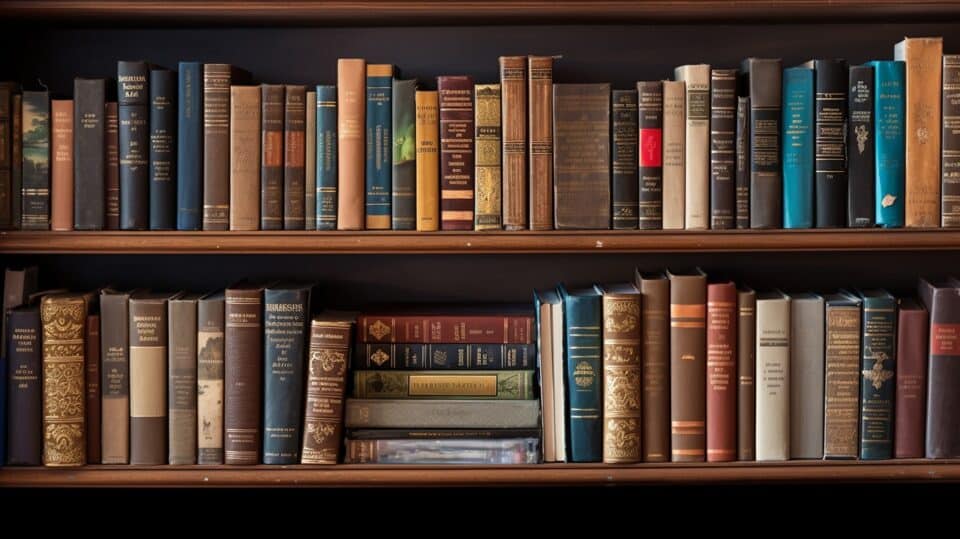
Physical books offer a unique reading experience with the touch and feel of paper, enhancing retention and comprehension.
Unique Reading Experience
As a mom, I understand the importance of finding unique experiences in everyday life. And when it comes to reading, there’s something special about holding a physical book in your hands.
The tactile experience of flipping through the pages and feeling the paper adds an extra layer of enjoyment that e-readers just can’t replicate. Plus, let’s not forget about those beautiful illustrations that come to life on the printed page – they’re often higher quality than what you’ll find on even the most high-end e-reader.
So while e-books have their advantages, like font flexibility and easy portability, sometimes you just can’t beat the charm and nostalgia of a good old-fashioned book.
Better Retention and Comprehension
When it comes to reading, I’ve found that physical books provide a unique experience that can actually improve retention and comprehension. Studies have shown that reading printed text on paper, like those beloved hardcovers and paperbacks, may lead to better memory recall and understanding compared to reading on e-readers like the Kindle.
There’s something about holding a book in your hands, feeling the weight of its pages, and physically turning them that engages our senses and helps us absorb information more effectively.
So if you’re looking for a way to truly immerse yourself in a story or learn something new, don’t underestimate the power of good old-fashioned print books!
Frequently Asked Questions About Whether Kindle Ebooks Are Really Cheaper Than Paper Books
Are Kindle ebooks generally cheaper than paper books?
Yes, in most cases, Kindle ebooks tend to be cheaper than their physical counterparts. This is because there are no printing or distribution costs associated with ebooks, allowing publishers to offer them at a lower price.
Are there any additional costs when purchasing Kindle ebooks?
No, once you own a Kindle device or have the Kindle app installed on your device, there are no additional costs associated with purchasing and downloading ebooks. However, some books may have optional add-ons or companion materials that could incur additional charges.
Can I share my Kindle ebooks with others?
Yes, Amazon offers a feature called Family Library that allows you to share your purchased content with up to two adults and four children in your household. However, this feature is only available for select titles and devices.
Are all books available as Kindle ebooks?
While many books are available in ebook format for Kindles and other e-readers, not all titles may be available digitally. Some older or more niche titles might only exist in physical form or have limited availability as an ebook depending on the publisher’s decisions.
Conclusion
In conclusion, while Kindle ebooks may appear to be cheaper at first glance, the cost comparison between ebooks and print books is not as clear-cut. Print books offer a unique reading experience that many readers still prefer, and their prices have become more competitive with the rise of online sellers.
Additionally, factors such as environmental considerations and the ability to share or borrow books should also be taken into account when choosing between Kindle ebooks and paper books.
So, before you hit that “Buy Now” button on your next book-buying spree, carefully consider your preferences and budget to determine which option truly offers the best value for you.
